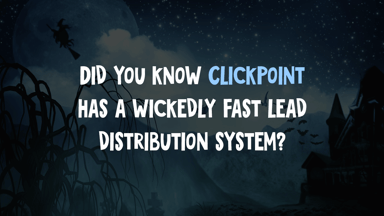Outbound KPI's that Make or Break Pest Control Lead Gen Campaigns
Understanding these KPI’s is Critical for Your Outbound Internet Lead Conversion
It was shocking the first time I visited an enterprise client and asked a few simple questions. I sat across the table from at least six highly qualified and skilled professionals in various lead generation and sales success roles. The questions I asked were straightforward:
- What is your current speed to contact?
- What is the process for following up with your internet leads?
- What is your CPA (Cost Per Acquisition), and how do you procure your leads?
As I asked each question and scanned the room, there were many apprehensions as these executives were unable to answer the first question accurately. Finally, after thinking about it, one replied, “we believe it is probably several hours if not more.” I think it threw them that I wasn’t shocked, but clearly, they were embarrassed that this was the case. They had all the resources they needed, an entire team of people focused heavily on lead generation. They could answer the last question with ease; knowing their lead cost and what it takes to convert was no problem. Why was it so difficult to understand how long it took their salespeople to respond to costly internet leads.
Understanding Speed-to-lead is Critical to Outbound Success
While it never shocks me that companies have a hard time answering the question around speed-to-lead, ten years later, I still encounter this problem often. I try to impress what most everyone already knows - that speed-to-lead is critical to outbound success. Drift recently surveyed approximately 400 of their customers and found that only 7% of participants responded to leads in under 5 minutes, leaving another 55% of participants responding to internet leads on average of 5 days or more. You read that correctly, and I can confirm firsthand that this is common. It is even more shocking considering there is a 10X decrease in the odds of contacting a prospect if you wait longer than 5 minutes. So what gives? If everyone knows speed-to-lead is critical, why are companies not moving mountains to change this eye-opening statistic?
See: How To Implement A B2C Lead Follow-Up System
The Broken Process That Kills Speed-to-Lead
The simple answer is, most companies rely on outdated CRM systems that are not suited to handle a high volume of leads and prioritize them. They don’t get them into the hands of someone who can take that lead at that moment. Think about a CRM system blindly delivering leads to salespeople on the phone, out to lunch, away on vacation, etc. It would take an administrator with supernatural capabilities to account for all of these variables.
See: How ClickPoint uses a Pull distribution system to stop lead loss.
Lead management, often considered a subset of marketing automation, is finally getting its recognition. To intelligently capture thousands of internet leads a day and then distribute them to the most suited and available salesperson is a discipline that deserves to stand on its own. The number of automated steps, configuration, and intelligence to handle internet leads in seconds, not hours or days, is sophisticated software deserving an independent category.
Companies can no longer attempt to hobble systems together and rely on their CRM investment to tackle this problem. Solutions like Drift and Intercom have solved some of these issues related to chat, but they only solve part of the problem. Almost all companies still rely on landing pages, Facebook campaigns, third-party lead sources, and various inbound leads that are not candidates for chat.
Automation and Process Drive Contact Rates
On top of speed-to-lead, there must also be a process that drives continual lead follow-up until sales make contact or until the prospect moves into a nurture sequence. We call this follow-up a cadence, and it must include every available outreach method such as phone, email, text SMS, and potentially even direct mail. When automation aligns with a tight follow-up process, there is an opportunity to capture maximum ROI. Once this occurs, companies drive measurable revenue from their internet lead campaigns.
Without this process-driven cadence, internet leads are given to salespeople hoping they follow a process that leads to a favorable outcome. Would you be shocked if I told you that most companies I talk to do not have a rigid follow-up process for their internet leads? Just as shocking as the above metrics, most salespeople give up on internet leads after 1-3 contact attempts. CRM has no way of enforcing contact attempts in the 10-12 range other than self-generated reminders. These deficiencies are why Lead Management exists and why understanding how to implement a follow-up process with your internet lead campaigns is paramount to success.
See also: Outbound Call Center is Critical for Your Pest Control Company
Next Up – Intelligent Cadence Segmentation for Pest Control Call Centers



